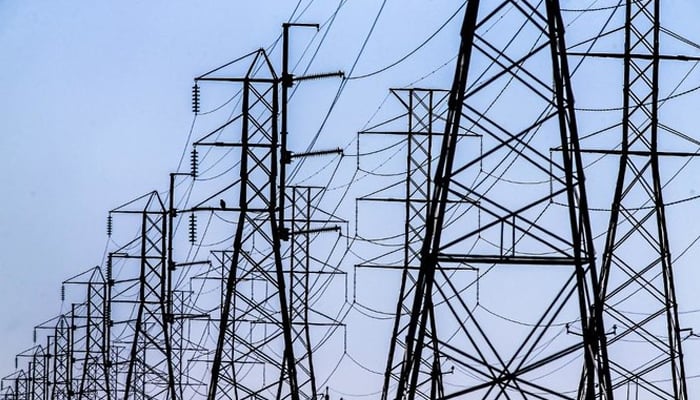Morality in a desert district: Tharparkar sets an example
Langrial shared these comments as he presented data comparing power bill recoveries and theft in these districts via his X handle
ISLAMABAD: Three economically disadvantaged districts in Pakistan have exhibited contrasting patterns in power sector theft and bill recoveries, with Tharparkar in the Sindh province emerging as the most efficient in terms of bill recoveries, surpassing Badin in the same province and Rajanpur in Punjab.
“Morality of a desert district sparsely populated, least urban, and much poorer in terms of economic base, Tharparkar district exhibits an extraordinary sense of civic duty of paying up its dues,” Federal Secretary of the Power Division, Rashid Mahmood Langrial, said this and posed the question what sets Tharparkar apart, and if we can draw inspiration from its residents.
Langrial shared these comments as he presented data comparing power bill recoveries and theft in these districts via his X handle on Wednesday.
Despite sharing similar demographic features such as low literacy rates, high poverty levels, limited access to information technology, and low urbanisation, the contrasts of power cost recovery are significant among these districts. Tharparkar, with the lowest population density among them, stands out.
In Badin district, with 70,109 electricity connections and a supply worth Rs4.7 billion, the volume of recovery was Rs3.2 billion, translating to a 69 percent recovery rate. The remaining Rs1.5 billion was lost due to widespread power theft.
Similarly, in Rajanpur district, with 0.181 million connections and a supply of Rs9.6 billion, the volume of recovery reached Rs8.3 billion, resulting in an 86 percent recovery rate. In contrast, Tharparkar district, with 34,665 consumers and electricity supply worth Rs1.5 billion, achieved a cost recovery of Rs1.3 billion, equivalent to an impressive 89 percent recovery rate.
Examining the socio-economic indicators of these districts, it is apparent that Rajanpur had a literacy rate of 37 percent, Badin 34 percent, and Tharparkar 26 percent. In terms of the poverty index, both Rajanpur and Tharparkar shared the same level at 0.75, while Badin was slightly higher at 0.78. The use of laptops in Rajanpur stood at three percent, Badin at two percent and Tharparkar at just one percent. Interestingly, urbanisation rates in Rajanpur were at 17 percent, Badin 22 percent, and Tharparkar at a mere eight percent. Tharparkar also boasted the lowest population density, with 84 persons per square kilometer, compared to Rajanpur’s 162 persons and Badin’s 263 persons living in the same area.
-
 Dolly Parton Marks Major Milestone As State Governor Honors Her Legacy
Dolly Parton Marks Major Milestone As State Governor Honors Her Legacy -
 Karley Scott Collins Reacts To Rumours Of Her Dating Keith Urban
Karley Scott Collins Reacts To Rumours Of Her Dating Keith Urban -
 Meghan Markle Sends Shockwaves With Promise Of Chaos: ‘Has The Power To Upset The Royals’
Meghan Markle Sends Shockwaves With Promise Of Chaos: ‘Has The Power To Upset The Royals’ -
 Jesy Nelson, Zion Foster Call It Quits Amid Twins' Heartbreaking Diagnosis: Source
Jesy Nelson, Zion Foster Call It Quits Amid Twins' Heartbreaking Diagnosis: Source -
 What King Charles Told Princess Diana In Letter Before Wedding?
What King Charles Told Princess Diana In Letter Before Wedding? -
 David Crosby Said This One Singer Had 'no Talent At All'
David Crosby Said This One Singer Had 'no Talent At All' -
 Meghan Markle’s Return Risks Setting Off Something ‘exhausting’ And William, Kate Are Bracing
Meghan Markle’s Return Risks Setting Off Something ‘exhausting’ And William, Kate Are Bracing -
 Bruce Springsteen Reveals Singer He Finds To Be Greatest Rock And Roll Voice
Bruce Springsteen Reveals Singer He Finds To Be Greatest Rock And Roll Voice -
 Andrew Mountbatten Windsor Ensures Teddy Bear Collection Reaches New Home
Andrew Mountbatten Windsor Ensures Teddy Bear Collection Reaches New Home -
 Ben Affleck Recalls 'throwing Up' During 'Armageddon's Final Scene
Ben Affleck Recalls 'throwing Up' During 'Armageddon's Final Scene -
 Kevin Costner Marks 71st Birthday With Decades-old Throwback Photos
Kevin Costner Marks 71st Birthday With Decades-old Throwback Photos -
 Why Royal Lodge Fell Into Disarray Under Andrew: Insider Exposes Loophole
Why Royal Lodge Fell Into Disarray Under Andrew: Insider Exposes Loophole -
 Hoda Kotb 'so Proud' As Today 'magic Reignites' With Sheinelle Jones
Hoda Kotb 'so Proud' As Today 'magic Reignites' With Sheinelle Jones -
 Kate Middleton Avoids Nanny Involvmenet In Prince George Matters
Kate Middleton Avoids Nanny Involvmenet In Prince George Matters -
 Colin Jost Jokes About Scarlett Johansson Losing Highest-grossing Actor Crown To Zoe Saldana
Colin Jost Jokes About Scarlett Johansson Losing Highest-grossing Actor Crown To Zoe Saldana -
 ‘Traitor’ Prince Harry Has ‘spooked’ His Family: ‘He Has To Pay A Price Of Re-entry’
‘Traitor’ Prince Harry Has ‘spooked’ His Family: ‘He Has To Pay A Price Of Re-entry’




